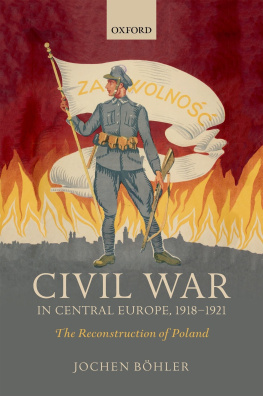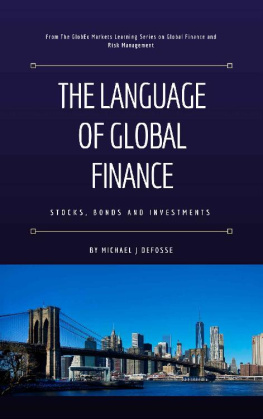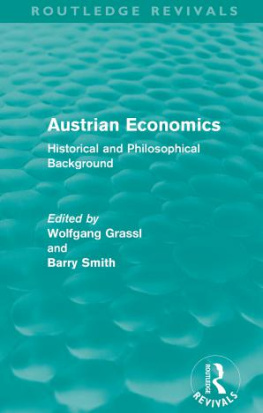Austrian Reconstruction and the Collapse of Global Finance, 19211931
NATHAN MARCUS
Cambridge, Massachusetts
London, England
2018
Copyright 2018 by the President and Fellows of Harvard College
All rights reserved
Cover photo: ullstein bild
Cover design: Lisa Roberts
978-0-674-08892-4 (alk. paper)
978-0-674-98304-5 (EPUB)
978-0-674-98305-2 (MOBI)
978-0-674-98258-1 (PDF)
The Library of Congress has cataloged the printed edition as follows:
Names: Marcus, Nathan, 1976 author.
Title: Austrian reconstruction and the collapse of global finance, 19211931 / Nathan Marcus.
Description: Cambridge, Massachusetts : Harvard University Press, 2018. | Includes bibliographical references and index.
Identifiers: LCCN 2017018928
Subjects: LCSH: Financial crisesAustriaHistory. | League of Nations. | AustriaEconomic conditions19181945. | AustriaHistory19181938. | AustriaPolitics and government19181938. | Gold standardHistory.
Classification: LCC HB3722 .M33655 2018 | DDC 330.9436 / 0511dc23
LC record available at https://lccn.loc.gov/2017018928
In memory of my maternal grandparents
LEOPOLDINE NATAN n e STORPER
Born in Vienna 28 December 1926
Deported to Theresienstadt 9 October 1942
Liberated by the Soviet Army 8 May 1945
Died in Prague 17 April 2003
ING. FRANTIEK NATAN
Born in Prague 31 December 1908
Deported to Theresienstadt 4 December 1941
Liberated by the Soviet Army 8 May 1945
Died in Prague 9 May 1965
Contents
- I.CRISIS
- Making Sense of Hyperinflation: 19211922
- The Road to Geneva: 19211922
- How to Kill a Hyperinflation: 1922
- II.CONTROL
- The Inception of Control: 19231924
- Reconstructions at the Crossroad: 1924
- The Politics of Control: 19251926
- III.COLLAPSE
- The Precedence of Politics: 19271929
- The Credit-Anstalt Crisis and the Collapse of the Gold Exchange Standard: 19301931
The Austrian crown (kr.) was stabilized in 1922 at 1 / 14,400th of its prewar level. One gold crown in 1923 thus equaled 14,400 paper crowns.
One gold crown equaled $0.20 and 71,000 paper crowns were roughly equal to one U.S. dollar.
The Austrian schilling (sch.) replaced the Austrian crown in 1924. One Austrian schilling equaled 10,000 paper crowns or 0.7 gold crowns. From 1924 to 1931, seven Austrian schillings roughly equaled one U.S. dollar.
The gates to the Second World War were opened in 1931.
Eric Hobsbawm, The Age of Extremes
T HE FINANCIAL HISTORY of interwar Austria is one of precedents. Austria was the first country in Europe to suffer from hyperinflation in the 1920s, followed by hyperinflation in Hungary, the more infamous one in Weimar Germany, and finally in Poland. Austria was also the first country to stop hyperinflation and the first to begin economic reconstruction through the intervention of the League of Nations. The reconstruction program drawn up in Geneva was replicated to help Hungary, and parts of it were incorporated into League schemes for Bulgaria, Danzig, Greece, and, though not sponsored by the League, the German Dawes plan. Last but not least, Austria was also the first European country in the summer of 1931 to battle a banking and then a currency crisis that threatened to take it off the gold standard, followed soon thereafter by Hungary, Germany, and most crucially Britain.
This book tries to give sense to little Austrias chronological preeminence. In fact, many financial historians have been at pains to explain why a small country like Austria should have triggered a Europe-wide financial crisis in 1931 (spoiler alert: it did not), or why it was the first state to receive League assistance after the Great War. To put it succinctly, the reason financial problems surfaced in Austria before posing problems to other countries was that none of these former belligerents suffered from such painful imbalances as the young Austrian Republic. No other country faced such a high war debt in relation to its tax revenues, no other state was forced to spend so much on pensions and wages in per capita terms, and no other economy was so dependent on foreign trade and foreign capital with respect to its gross national product. These imbalances resulted from the discrepancy between the new countrys dimensions and the magnitude of its inherited problems. An empire had created the troubles, but the means left by which to tackle them were those of a small nation-state. This meant that in Austria difficulties occurred earlier, inadequate policies broke down sooner, and inconsistencies were observed first. It helps explain why hyperinflation broke out in Austria more than a year before it ravaged Germany, why Austria became the first country to submit to League reconstruction, and why it was the first country to experience a severe financial crisis in 1931.
The Austrian First Republic, therefore, despite and precisely because of its small size, played a pivotal role in the turbulent history of interwar Europe. What makes it furthermore an interesting case study for scholars today is the fact that for much of its short democratic life it was under international financial control. Austria was the first country to appeal to, and receive, financial assistance from a multilateral governmental body: the League of Nations. In return, it had agreed to adhere to a reform program, drafted in cooperation with the League, which was overseen by a foreign General Commissioner residing in Vienna. In the early 1920s, this General Commissioner called Austria a grand laboratory. For the first time in human history, representatives of different states had gotten together to help a desolate country raise money for economic reconstruction. As much as such schemes have today become commonplace (see, for example, the European Union interventions in Greece since 2010), they remain controversial to many. Modern-day calls of financial colonialism and imperialist banking echo earlier voices of interwar Austrians and their later historiographers.
The Austrian case allows us to address such accusations and to study the genesis of international financial assistance, intervention, and fiscal control. What today still remains shrouded in mysteryenigmatic meetings of central bankers, secret negotiations between creditor and debtor governments, confidential evaluations of ailing economies by international experts and foreign representativeshas become accessible in the case of interwar Austria. The historical archives of the League of Nations, European central banks, and the Austrian First Republic, as well as those of many private banks, are open to todays historians. This book thus desires to study the early cooperation between private financiers, financial experts at the League of Nations, and the staff of European central banks to help reconstruct Austria. Their common commitment to subjugate narrow national interests in favor of Austrians and a better European future so shortly after the war rested on a new spirit of international cooperation, embodied and put into practice by the League. It was also motivated by the fear of Bolshevik revolution in Central Europe and the belief that a prosperous Austria was essential for stability in the region. Among Austrians, however, the foreign intervention also provoked resentment, xenophobia, and accusations of international capitals conspiracy against their country.












